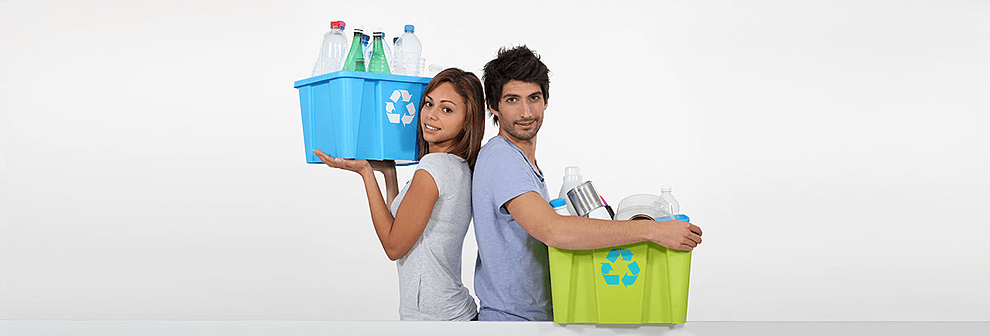How to Organise an Eco-friendly House Clearance
Posted on 10/09/2024

House clearances may be needed for a variety of reasons. Whether you are downsizing, renovating your current house, selling the property or simply needing to get rid of unwanted clutter, you might need to carry out an organised house clearance. There are various approaches to clearing out a home and it can often be a stressful procedure, but taking on an eco-friendly approach is one of the most rewarding solutions.
What is Eco-Friendly House Clearance?
Eco-friendly house clearance refers to the process of disposing of unwanted or used items in an environmentally conscious way. This type of clearance encourages reusing and recycling products, reducing waste and preserving resources. It also helps to limit the number of items that end up in landfill sites. The process involves sorting through your belongings, deciding what to keep and what to donate or sell. Once everything has been sorted, the items can then be donated, recycled or repurposed. An eco-friendly house clearance reduces waste and carbon footprint whilst helping others in need as well as saving money at the same time.
Preparation
Before you start your eco-friendly house clearance, it is important to prepare for the process ahead. Start by assessing what items will stay and which ones will go by making a list for each category. Consider whether any items can be reused or recycled before you decide where they will go, as this can help provide more successful outcomes when it is time to discard them. Be sure to research different reuse and recycling options available near you, as this will further aid the eco-friendly nature of your project. You should also create designated boxes or bags, so they can be easily identified during the sorting process. For example: 'keep', 'reuse', 'donate' and 'dispose' etc.
Organising and Sorting
Once all necessary preparation has been completed, you can begin sorting through your belongings in order to decide what stays and what goes. Start off by getting rid of anything that you don't use anymore but have kept 'just in case'. This includes items, such as broken toys, furniture that no longer works and clothes that don't fit, etc. Go through every room in the house, including lofts and attics - plan separate sessions if necessary depending on how much clutter there is - categorising each item according to which boxes/bags you previously set aside for reuse/disposal, etc. (category examples include books, clothes, furniture, etc). As you go along, try to remember if there are any possessions that belonged to friends and family so these can be given back once the process is complete.
What to Do with Unwanted Items and Furniture
The key factor, when carrying out an eco-friendly house clearance is reusing as many items as possible before disposing of them in landfills or donating them where appropriate. If there are usable pieces of furniture such as cabinets and chairs, then consider donating them either directly or via charity shops - for instance, local furniture projects that repurpose old furniture for those with fewer resources than yourself may welcome your old pieces with open arms! When considering clothing donations such as curtains, bedding and towels, look into sending them to linen mills where they can be reused or upcycled into new textile products. Also, remember some companies may be willing to pay for certain electrical goods, so make sure you do some research before discarding anything with a plug socket, etc.!
Recycling and Disposal
When it comes to recycling and disposal, it is important that this is done properly, in order to avoid contamination or damage to landfills, etc. due to incorrect management of hazardous materials (for example, asbestos). Specialised companies may be available depending on where you live who offer expert advice and services when dealing with hazardous materials, such as these; otherwise, unpleasant jobs like dismantling large furniture can always be outsourced, if needed - always do some research first! Furthermore, it is worth noting any appliances that may potentially contain refrigerants should only ever be taken care of by professionals in order to comply with environmentally friendly legislation, e.g. CFC laws etc; neglecting this could lead to harsh penalties from government bodies to remain compliant at all times!
Additional Considerations
You might also want to think about other activities related to clearing out a home, such as purchasing second-hand replacements instead of new ones upon completion; this ensures that resources are reused rather than expended unnecessarily, thus contributing towards more sustainable measures overall - look online for second-hand furniture stores nearby! Additionally, when going through papers, try shredding them rather than throwing them away; specialist services are available so take advantage of these whenever possible! Finally, assess how much energy is being consumed throughout the entire process by turning off unnecessary appliances around the house - reduced energy bills mean environmental benefits too!
Conclusion
The effort taken towards achieving an eco-friendly house clearance will pay dividends in both environmental responsibility terms as well as reducing costs associated with disposing of/recycling, etc.! By following these steps, you should find organising a sustainable approach to house clearance far less stressful both physically and mentally!





